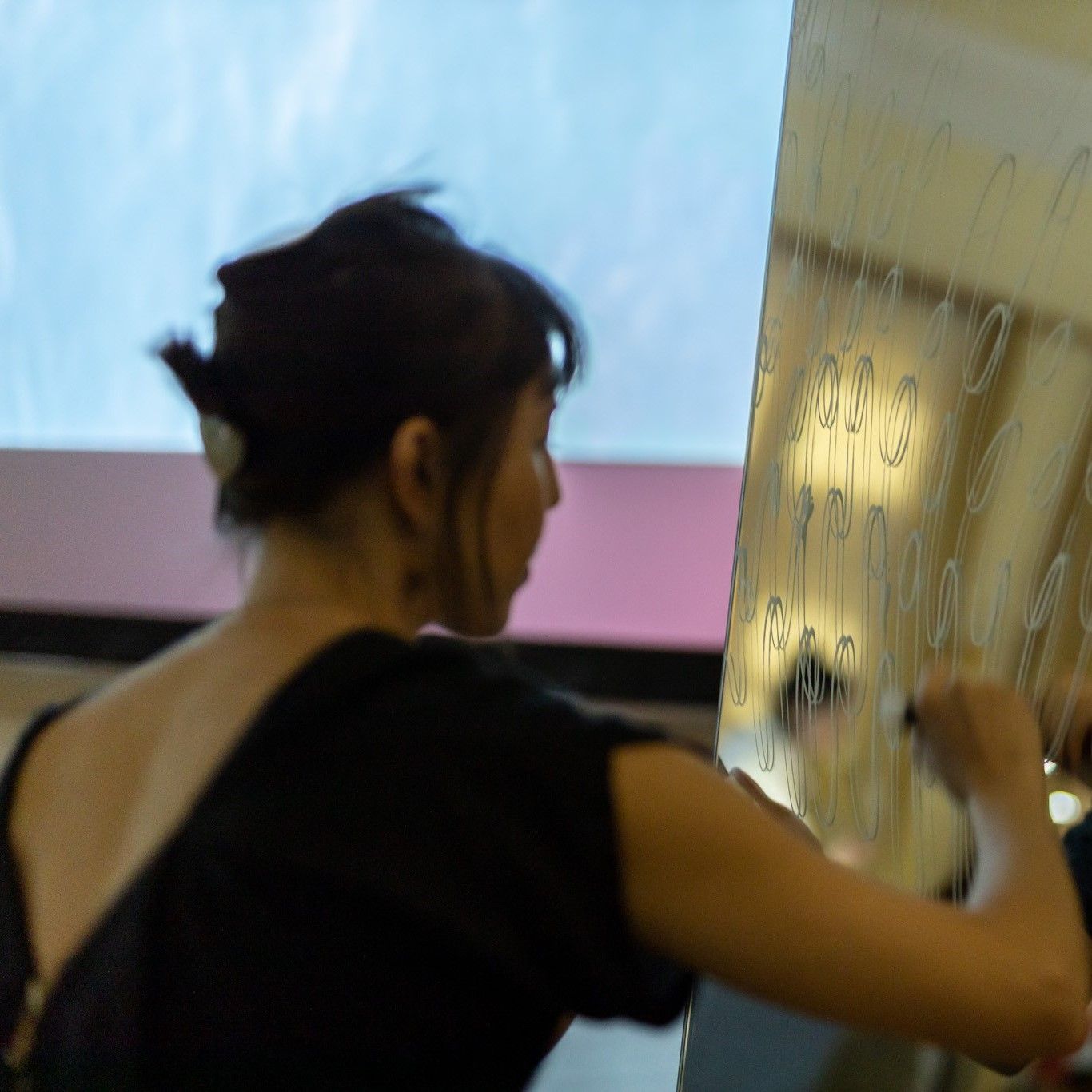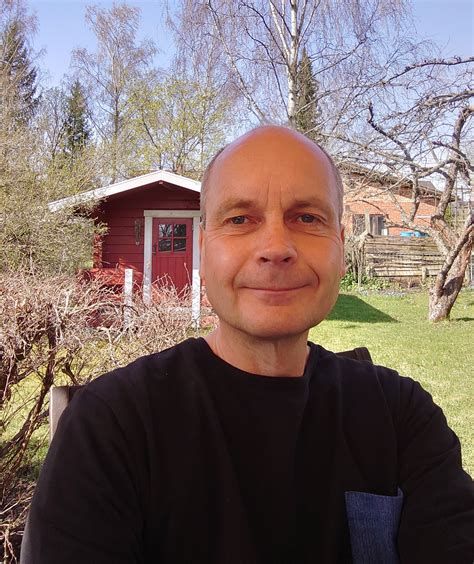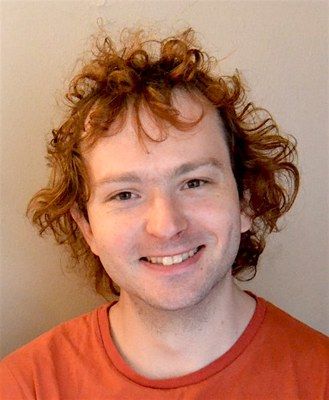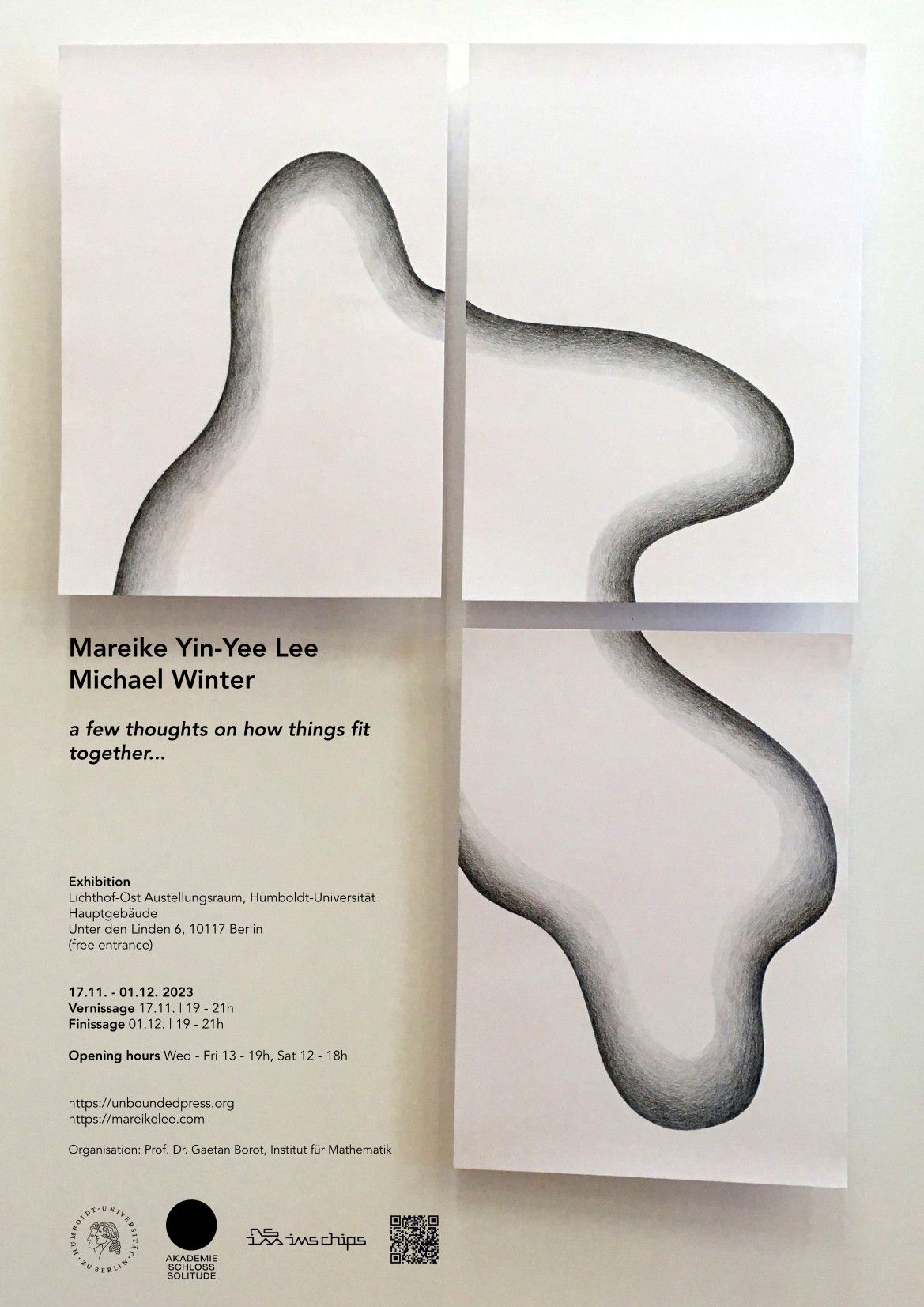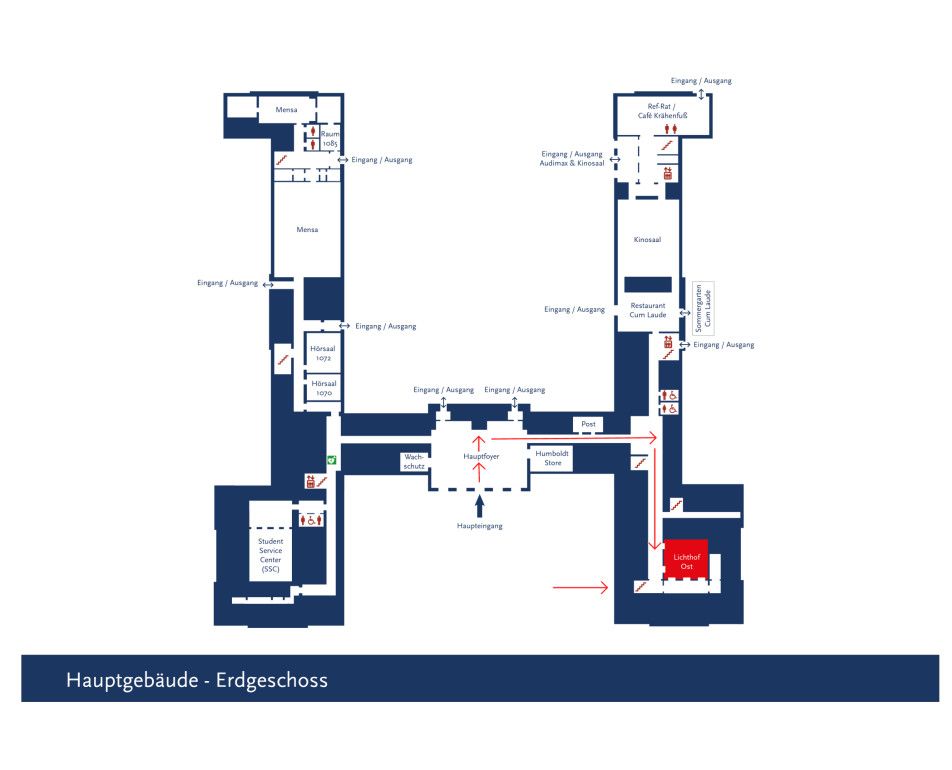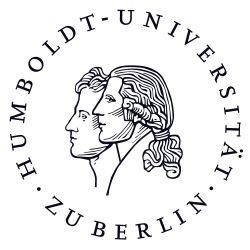a history of the domino problem is a performance-installation that traces the history of an epistemological problem in mathematics about how things that one could never imagine fitting together, actually come together and unify in unexpected ways. The work comprises a set of musical compositions and a kinetic sculpture that sonify and visualize rare tilings (more commonly known as mosaics) constructed from dominoes. The dominoes in these tilings are similar yet slightly different than those used in the popular game of the same name. As opposed to rectangles divided into two regions with numbers between 1 and 6, they are squares where each of the 4 edges is assigned a number (typically represented by a corresponding color or alternatively, pattern) called Wang tiles. Like in the game, the rule is that edges of adjacent dominoes in a tiling must match.
The tilings sonified and visualized in a history of the domino problem are rare because there is no systematic way to find them. This is due to the fact that they are aperiodic. One can think of an aperiodic tiling as an infinite puzzle with a peculiar characteristic: given unlimited copies of dominoes with a finite set of color/pattern combinations for the edges, on can form a tiling that expands infinitely. However, in that solution, any repeating structure in the tiling will eventually be interrupted. This phenomenon is one of the most intriguing aspects of the work. As the music and the visuals are derived from the tilings, the resulting textures are always shifting ever so slightly.
The original Domino Problem asked if there exists an algorithm/computer program that, when given as input a finite set of dominoes with varying color combinations for the edges, can output a binary answer, `yes' or `no', whether or not copies of that set can form an infinite tiling. The problem was first posed by Hao Wang in 1961, who conjectured that the answer is positive and that such an algorithm does exist. The existence of aperiodic tilings would mean that such an algorithm does not exist. However, in 1964, his student, Robert Berger, proved him wrong by discovering an infinite, aperiodic tiling constructed with copies of a set of 20,426 dominoes. The resolution of Wang's original question led to new questions and mathematicians took on the challenge of finding the smallest set of dominoes that would construct an infinite aperiodic tiling. Over the past 60 years, this number has been continually reduced with the contributions of many different mathematicians until the most recent discovery of a set of 11 dominoes along with a proof that no smaller sets exist. It is a remarkable narrative/history of a particular epistemological problem that challenged a group of people not only to solve it, but to understand it to the extent possible.
The exhibition will feature individual and collaborative works by Michael Winter and Mareike Yin-Yee Lee in a constellation designed specifically for the Lichthof Ost exhibition room of the Humboldt University. The original kinetic sculpture Winter created to visualize the aperiodic tilings of the history of the domino problem will be juxtaposed with recent works by Yin-Yee Lee as well as collaboratively created realizations of the tilings. The works on display by Yin-Yee Lee will highlight selections from her Hidden Lakes and Missing Pieces series in which enigmatic outlines of lakes and various shapes encourage observers to perceive similarities and differences in form, pattern, and repetition between the pieces and to mentally fill in blank space. The collaborative realizations of the tilings will include prints generated by Winter with the aid of a computer that incorporate images and color schemes by Yin-Yee Lee as well as a floor mosaic of drawings on mirrors. The exhibition plays on the macro versus the micro, transformation, and how topologies of various color combinations, relationships between shapes and gradients reflect in space in order to illuminate "a few thoughts on how things fit together..."
The kinetic sculpture displays the mosaics using visual cryptography. In visual cryptography, a message is encrypted by dividing the information of the message into two `shadow' images, which look completely random and independent of each other. The message is decrypted and revealed when the shadow images are combined/overlayed in a precise orientation. In the kinetic sculpture of a history of the domino problem, the shadow images are printed on photomasks, which are essentially high-resolution transparencies: quartz wafers with a chrome coating etched at a pixel size ranging from nano- to micrometers. A high-precision, motorized multiaxis stage aligns the finely printed shadow images to reveal the mosaics (along with 3 other images of poetic texts inspired by the history of the Domino Problem).
Lichthof Ost, HU Berlin Hauptgebäude, Campus Mitte, Unter den Linden 6 (U-Bahn Unter den Linden oder Museuminsel)
Lichthof Ost, HU Berlin Hauptgebäude, Campus Mitte, Unter den Linden 6 (U-Bahn Unter den Linden oder Museuminsel)
with Prof. JARKKO KARI (Turku University), moderated by Prof. Dr. GAËTAN BOROT (HU Berlin)
the abstract of Prof. JARKKO KARI's Lecture is provided below
performance by KALI ENSEMBLE
Fritz-Reuter-Saal, HU Berlin Universitätsgebäude (am Hegelplatz), Dorotheenstraße 24 (U-Bahn Unter den Linden oder Museuminsel)
performance by KALI ENSEMBLE
KM28
Karl-Marx-Str. 28, 12043 Berlin (U-Bahn Karl-Marx-Platz)
(entry by donation, with proceeds going to the Kali Ensemble)
About the Public lecture
From Wang Tiles to the Domino Problem: A Tale of Aperiodicity
This presentation delves into the remarkable history of aperiodic tilings and the domino problem. Aperiodic tile sets refer to collections of tiles that can only tile the plane in a non-repeating, or non-periodic, manner. Such sets were not believed to exist until 1964 when R. Berger introduced the first aperiodic set consisting of an astonishing 20,426 Wang tiles. Over the years, ongoing research led to significant advancements, culminating in 2015 with the discovery of a mere 11 Wang tiles by E. Jeandel and M. Rao, alongside a computer-assisted proof of their minimality. Simultaneously, researchers found even smaller aperiodic sets composed of polygon-shaped tiles. Notably, Penrose's kite and dart tiles emerged as early examples, and most recently, a groundbreaking discovery was made - a solitary aperiodic tile known as the "hat" that can tile the plane exclusively in a non-periodic manner. Aperiodic tile sets are intimately connected with the domino problem that asserts how certain tile sets can tile the plane without us ever being able to establish their tiling nature with absolute certainty. Moreover, aperiodic tilings hold a distinct visual aesthetic allure. In today's musical presentation, their artistic appeal transcends the visual domain and extends into the realm of music.
-Jarkko Kari

My practice as a composer and sound artist is diverse, ranging from music created by digital and acoustic instruments to installations and kinetic sculptures. Each piece typically explores one simple process and often reflects various related interests of mine such as phenomenology, mathematics, epistemology, algorithmic information theory, and the history of science. To me, everything we experience is computable. Given this digital philosophy, I acknowledge even my most open works as algorithmic; and, while not always apparent on the surface of any given piece, the considerations of computability and epistemology are integral to my practice. I often reconcile epistemological limits with artistic practicality by considering and addressing the limits of computation from an artistic and experiential vantage point and by collaborating with other artists, mathematicians, and scientists in order to integrate objects, ideas, and texts from various domains as structural elements in my pieces. My work also aims to subvert discriminatory conventions and hierarchies by exploring alternative forms of presentation and interaction, often with minimal resources and low information.
My work has been presented at venues and festivals throughout the world such as REDCAT, in Los Angeles; the Ostrava Festival of New Music in the Czech Republic; Tsonami Arte Sonoro Festival in Valparaiso, Chile; the Huddersfield New Music Festival in the United Kingdom; and Umbral Sesiones at the Museo de Arte Contemporáneo in Oaxaca, Mexico. Recordings of my music have been released by XI Records, Another Timbre, New World Records, Edition Wandelweiser, Bahn Mi Verlag, Tsonami Records, and Pogus Productions. In 2008, I co-founded the wulf., a Los Angeles-based organization dedicated to experimental performance and art. From 2018 to 2019, I was a fellow / artist-in-residence at the Akademie Schloss Solitude in Stuttgart, Germany. I currently reside in Berlin.
